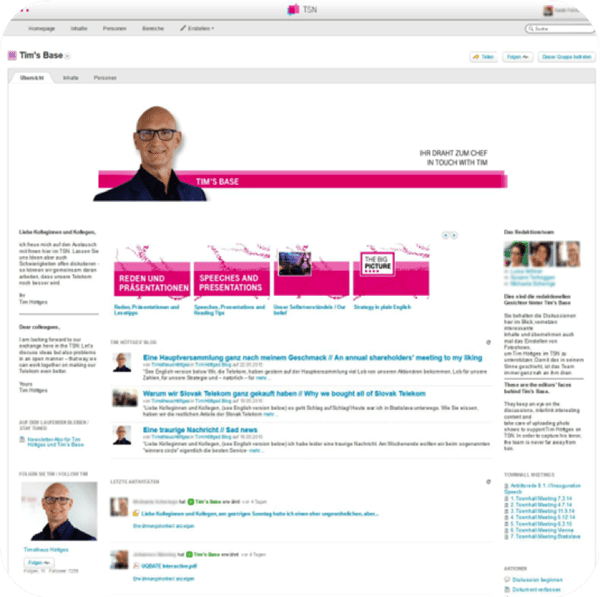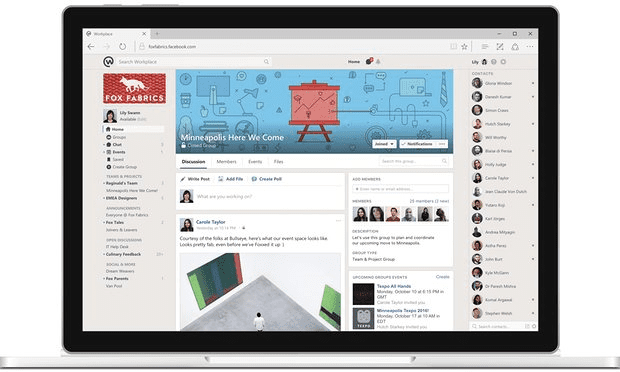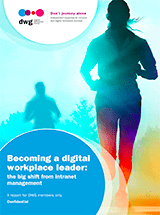My 10 digital workplace predictions for 2017

As in past years I reveal my annual digital workplace predictions for 2017, along with my “self-rating” 2016 scorecard.
Here are my numbers from recent years:
- 2014: 7/10
- 2015: 7/10
- 2016: 8/10 (getting better but “room for improvement”)
I would be delighted to hear in the comments below how you would score me for 2016. Do you agree? Plus any reactions to what I believe is coming in 2017.
My 2016 Scorecard
| Prediction 1 | Employee experience will become the heartbeat of digital workplace strategies. | ✓ |
|---|---|---|
| Prediction 2 | Digital workplace teams will envision new “digital headquarters” that mirror refashioned physical HQs. | ✓ |
| Prediction 3 | Enhanced intranets as “front doors” into the wider digital workplace will gain importance. | ✓ |
| Prediction 4 | Culture will take an ever more central role in digital workplace success. | ✓ |
| Prediction 5 | Enterprise search will finally make significant progress due to powerful success stories. | ✓ |
| Prediction 6 | Disappointing digital workplaces will harm recruitment, retention and engagement. | ✓ |
| Prediction 7 | Microsoft’s dominance will open the way for viable alternative technologies. | ✗ |
| Prediction 8 | Governance, strategy and measurement will set the world’s best digital workplaces apart from the rest. | ✓ |
| Prediction 9 | Mobile workers will have deeper knowledge in their own hands digitally – further reducing and replacing many managers. | ✓ |
| Prediction 10 | Our concept of the digital workplace will expand to include “machine to machine” (non-human) relationships. | ✗ |
My digital workplace predictions for 2017
1. Digital workplaces seize on AI in the “intelligent workplace”
This has been much talked about but now the “future” has finally arrived. When my GPS app Waze asks me as I start driving from London if I would like to “go home”, it is thinking for me (and learning from my patterns). This quite subtle digital experience is starting to spread its tentacles through our consumer life – and the opportunities it offers internally within the workplace are fascinating.
Slack is the digital workplace service that most evidences this intelligent capability (so far) but all major enterprise technologies will become imbued with such “thinking for us” – and much faster than I had envisaged even 12 months ago. In 2017, AI in the digital workplace will come of age as the “intelligent workplace” gathers pace.
2. Focus shifts from “firing up tech” to changing behaviour and culture
This is a striking change that we in the Digital Workplace Group have seen strongly in 2016. For the first time, many large enterprises are most concerned about culture and behaviour change when deploying new digital workplace services – and are viewing turning on the technology more as a “hygiene factor”, particularly as services move relentlessly to the cloud.
For one major pharma client in Germany, their new collaboration services were straightforward technically – but after evidence from their history that simply implementing new technologies doesn’t bring the much-touted benefits to employees, this time they turned to change management and culture as the levers they needed to tackle. This pattern will extend for many organizations and the so-called “soft skills” of digital workplace improvements will take centre stage.
3. Digital workplace strategy takes central role
Who would have thought that 2017 looks set to be the year for deep thinking and reflection? In a supposedly sound bite and instant gratification world, one encouraging trend is the focus on medium-term planning, including roadmaps, future workplace programmes and well-constructed digital strategies for employees, contractors, freelancers, supply chain, partners and distribution.
One area DWG benchmarks is how far companies have described and deployed digital business strategies, and one large US financial services retailer was typical in taking time to think strategically about its “Workplace 2025”, with C-suite engagement in the process. Strategy, roadmaps and clarity of future direction will be a popular focus in 2017.
4. Intranets keep getting better and stronger
Weren’t intranets supposed to have become extinct by now? Rumours of their demise have been around for 15 years or more. The reality is though that any well-functioning organization of any size still requires a robust, productive intranet, if only as a digital front door to the wider digital workplace.

Nationwide’s new SharePoint intranet
Whether it is Estée Lauder or Nationwide, compelling intranets that deliver value to the workforce are essential within the context of the broader needs of digital workplaces. Upgrades, new functionality and better mobile experiences will all be part of the enhanced intranets we will see.
5. The “centre of gravity” for work moves from physical to digital
I recently heard Accenture CEO Pierre Nanterme say of their 330,000 plus staff: “We are a virtual organization… our offices are tactically useful but strategically irrelevant.” Work has always been defined by location and now work itself has “left the office”. This is not to say that offices don’t still fulfil engagement and productivity roles, but increasingly the centre of gravity for work has become virtual, mobile and fluid.
If we could see and touch the digital world of work in the same way as we can the physical, it would be obvious to us that 90% of work happens in non-physical environments and that this percentage will increase as the digital world of world gets ever richer and more intelligent. Why do we plan for physical workplaces, when where we work is already primarily digital? Time to recalibrate our thinking.
6. Public and civic organizations transform their digital workplaces
One intriguing and encouraging development is that “non-corporates” are increasingly determined to drive their digital transformation agendas. Governments, parliaments, international non-governmental organizations and charities are showing strong ambitions and practice to reimagine their digital workplaces and their external digital services.
This public and civic sector believes (rightly) that they are behind the corporate sector but their new missions to close the gap will produce digital innovations that are likely to surprise and impress their business counterparts, as starting late can have advantages where “leapfrog approaches” can be taken. The UK’s Government Digital Service has already pioneered digital citizen services that would delight any large corporate.
7. Leaders influence (rather than control) as leadership becomes digital
Tim Höttges, CEO of Deutsche Telekom, leads a digital social community known as “Tim’s Base”, where any employee can ask a question on any topic – and responses come directly from Tim. More than 7, 000 employees have joined Tim’s Base and even difficult topics are not off limits. Leadership in the modern world of work has become digital and growing numbers of senior executives (not just CEOs) are recognizing this.

“Tim’s Base” at Deutsche Telekom
To make your leadership felt in your organization, leaders at all levels must be present digitally and not just physically. Becoming adept at digital leadership will increasingly be essential – and, with that, comes the need also to switch from dictating and commanding to shaping and influencing behaviour and focus for the workforce you lead. This leadership upheaval will ramp up in urgency.
8. Quality search becomes common
How long have we waited for a decent search experience to enter the digital workplace? Too long. In a DWG member meeting at The Coca-Cola Company’s HQ in Atlanta this year I was thrilled to see the quality of search being shown live by Verizon, EY and The Coca-Cola Company – and others are following suit.
This has been many years in the making but finally we will start to see and enjoy search experiences that actually work well. Partly this has come about through human intervention in digital teams but also as the technology has improved – and the arrival of IBM Watson is certainly helping.
9. Workplace by Facebook disrupts the digital workplace industry
Frankly, I was highly skeptical two years ago when Facebook decided to pilot an enterprise version of its ubiquitous consumer platform. But I have been proved wrong – firstly from listening to the experiences at Royal Bank of Scotland and then from hearing what other pilot organizations say. While the degree of success of the full launch of Workplace by Facebook will not be known for a few years, what is clear already is that there is a strong appetite across different sectors and sizes of company for a product that workers already know well.

Demo of Workplace by Facebook
10. Digital literacy becomes an essential competence
What is the “digital IQ” of your organization? We regard literacy in work to cover reading, writing and maths, but what of the digital literacy we need in order to be engaged and productive? The digital intelligence of your workforce is a new essential capability and, wherever you are now, the digital literacy skills will need to be raised.
This will result in mentoring and buddying programmes such as the Barclays “Digital Eagles” where junior people bring digital learning to more senior people. But all organizations will view their digital IQ as important and will seek to systematically improve levels rather than just assume people “get technology” because they use Instagram in their non-work lives.
Related Research and Resources
Becoming a Digital Workplace Leader
Setting up a Digital Workplace
See Also
Six things the Digital Workplace Group has learnt about digital workplace maturity
Paul Miller’s 10 digital workplace predictions for 2016
Three great Paul Miller recordings on digital leadership
Categorised in: Digital workplace


